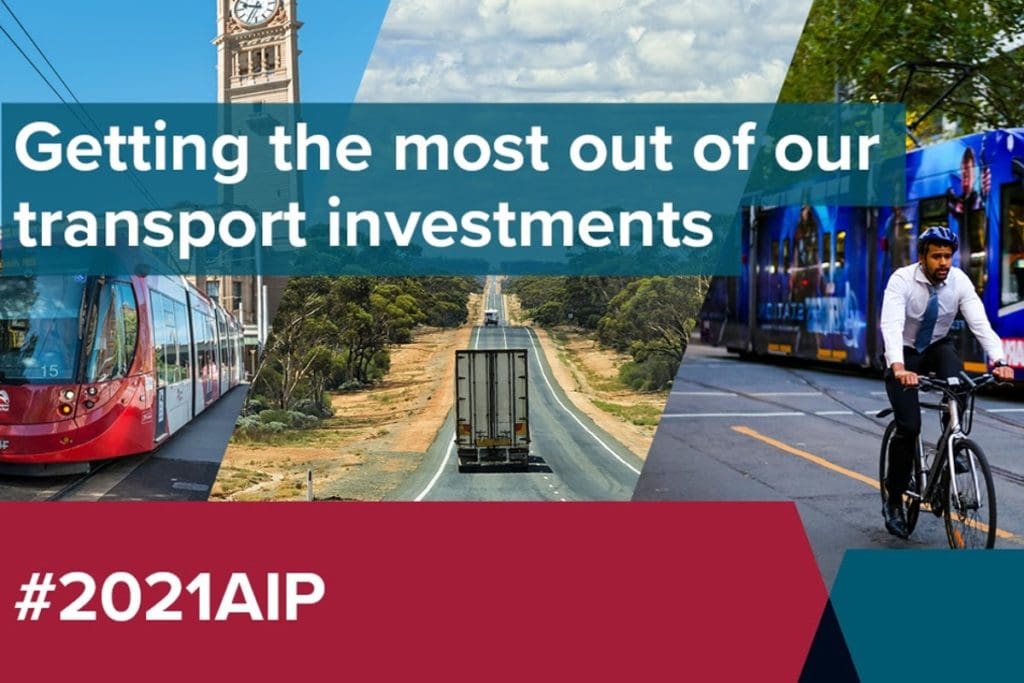Infrastructure Australia’s New Plan Embraces Micromobility

Canberra, ACT
Infrastructure Australia (IA) is an independent statutory body that is the leading source of research and advice for governments, industry and the community on nationally significant infrastructure needs.
It was created via the Infrastructure Australia Act 2008 during the Rudd Labor government. In 2014 during the Abbott coalition government, the Infrastructure Australia Act 2008 was amended to give Infrastructure Australia new powers and to create an independent board with the right to appoint its own Chief Executive Officer.
Once every five years, IA releases a major plan covering the subsequent 15 years. Therefore the Australian Infrastructure Plan 2021 (AIP21) released on Thursday 3rd September was the first since 2016 and addresses what Australia’s infrastructure priorities should be between now and 2036.
Infrastructure Australia has a mandate to prioritise and progress nationally significant infrastructure investments. It leads reform on key issues including means of financing, delivering and operating infrastructure and how to better plan and utilise infrastructure networks.
The bottom line is that elected governments at all three levels can choose to ignore IA’s plans and priority lists, but not without at least some political risk, given IA’s status, their in-depth expert reports and the high level of stakeholder consultation they conduct before producing their reports. Therefore, this latest report which goes further than any previous reports in embracing active travel is a significant step forward.
Australia’s peak national cycling advocacy group, We Ride Australia said, ‘The release today of the Australian Infrastructure Plan 2021 (AIP21) by independent national advisors Infrastructure Australia signals a major shift in approach to our future infrastructure needs and planning.’
‘The transport infrastructure section of the plan, to which We Ride provided extensive input during the draft stages, is focused on addressing major changes with better mobility outcomes for all Australians through:
- Integrating transport networks and connecting our regions.
- Better choices for walking and cycling.
- Obtaining better value from the once-in-a-generation spend on infrastructure that has occurred in response to COVID-19.
‘Enabling local, door-to-door mobility is one of the key themes in our ‘re-discovered’ local communities, with the Plan calling for the completion of continuous separated active travel networks so that people have the choice to walk, ride or use a micromobility device.’
We Ride’s Director – National Advocacy Stephen Hodge said, “We were very pleased to be asked to assist with the drafts of the Transport section.
“The strong focus on bikes and active travel makes it much more likely bicycles will be appropriately considered in all policy and funding decisions by governments in the future.
“We couldn’t be happier with this plan led by Infrastructure Australia’s CEO, Romilly Madew, and her team – with a special shout-out to Transport lead, Matt Faber,”
“Additionally, the broad national consultation means that the nation as a whole ‘owns’ this plan, experts, planners and governments at all levels have all had input into it.”
One of the ‘Key Messages’ highlighted at the front of the Transportation section of the report reads, ‘With more people walking, cycling or using a micromobility device as part of their daily travel routine, prioritising and accelerating investment in active travel will pay health dividends for individuals and create less congested urban communities.’
Of the many specific recommendations that have some positive overlap with micromobility, 4.3.4 is an example: ‘Enable every person who wants to walk, ride a bike or use a micromobility device for a local journey or last-mile freight delivery to do so safely by completing continuous separated active travel networks.’
In further comments given exclusively to Micromobility Report, Stephen Hodge said, “The plan increases the importance of approaches that value moving people over moving vehicles. It links the challenges that are becoming evident for the future due to climate change, population growth… to innovation and being more transparent about funding various types of infrastructure.
“The report is quite explicit that complete networks must be considered for active travel. It’s also quite explicit that you have to offer options to people who are disadvantaged in the transport system and it’s quite explicit that we have to reduce our dependence upon cars for our transport needs. This is quite a big change in the expert independent federal infrastructure advice.
“The entire nation owns this plan. They did such an enormous process of engagement and consultation on it: state and local government experts were consulted, transport and subject matter experts were consulted, and that’s why we were invited to comment on the transport plan, through our engagement in advocacy for bicycling. There were literally thousands of inputs into it.
“We consulted on every level of the drafts and we provided information to the authors of the transport section that they requested.
“Every state now has an infrastructure body, there’s Infrastructure NSW, Infrastructure Victoria and they work very closely with Infrastructure Australia so that that there will be a very consistent, forward looking approach to funding, justification and evaluation of infrastructure.
“Industry is often ahead of the government in approaches to the big challenges that we face. There is strong, unified support for this plan across large corporations, academia, state and local governments.”
“This report is not in and of itself the be all and end all, but it’s an important prerequisite to get the change we need and get more people riding bikes,” Stephen concluded.
Visit this link to download a copy of the full AIP21 report, which runs to 650 pages.
Join the Conversation:
What would you like to see as the highest priority for government spending on infrastructure?
